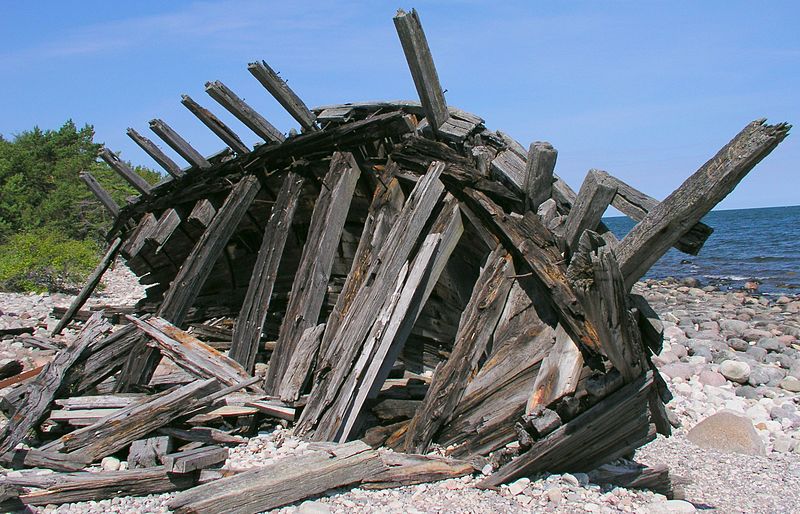
Beached shipwrecks don’t generally survive for long when pitted against the elements. Courtesy of Wikimedia Commons.
Latest News
November 5, 2015
Mankind has been plying the waves for thousands of years. Not every ship makes it safely back to port, resulting in a huge number of shipwrecks that wash up regularly on coastlines around the world. An even larger number of wrecks remain below the waves forever, occasionally visited by curious divers or experts keen to document the past.
Part of the UNC Coastal Studies Institute’s mandate is to preserve and record shipwrecks wherever they are found, both on land and in the sea. Generally, a shipwreck that washes ashore faces rapid destruction both from the pounding of the waves and the slow drying out process that leeches preserving water from the structure. In the past, UNC teams have had to race against the clock to capture images of beached wrecks, but advances in 3D technology have made documenting such finds easier and faster.
 Beached shipwrecks don’t generally survive for long when pitted against the elements. Courtesy of Wikimedia Commons.
Beached shipwrecks don’t generally survive for long when pitted against the elements. Courtesy of Wikimedia Commons.In 2009, winter storms uncovered the remains of a ship built in the 1600s. Rather than leave the find to be destroyed by the elements, UNC removed the wreck from the beach. The drying out process left behind a mass of twisted lumber that can only vaguely be recognized as a ship and left UNC with a desire for a better method of recording the past.
Enter 3D scanning and printing. Making accurate drawings of a beached wreck can take a dozen individuals hundreds of hours to complete, while a 3D scan can be completed in hours. The resulting digital image can then be saved as a 3D image, or printed out with a 3D printer to create a replica of the wreck that can be further studied or placed into storage as a record of the wreck.
Along with the potential to save records of beached wrecks, it’s possible to use 3D imaging to record wrecks that remain in Davy Jones’ locker. UNC researchers can use underwater cameras to document a ship, and then leverage 3D imaging technology to create a digital design from the pictures. This process has helped UNC to create a digital record of the ships sunk during WWII and the Battle of the Atlantic.
Below you’ll find a video that follows a UNC expedition to shipwreck sites from the Battle of the Atlantic.
Subscribe to our FREE magazine, FREE email newsletters or both!
Latest News
About the Author
John NewmanJohn Newman is a Digital Engineering contributor who focuses on 3D printing. Contact him via [email protected] and read his posts on Rapid Ready Technology.
Follow DE





